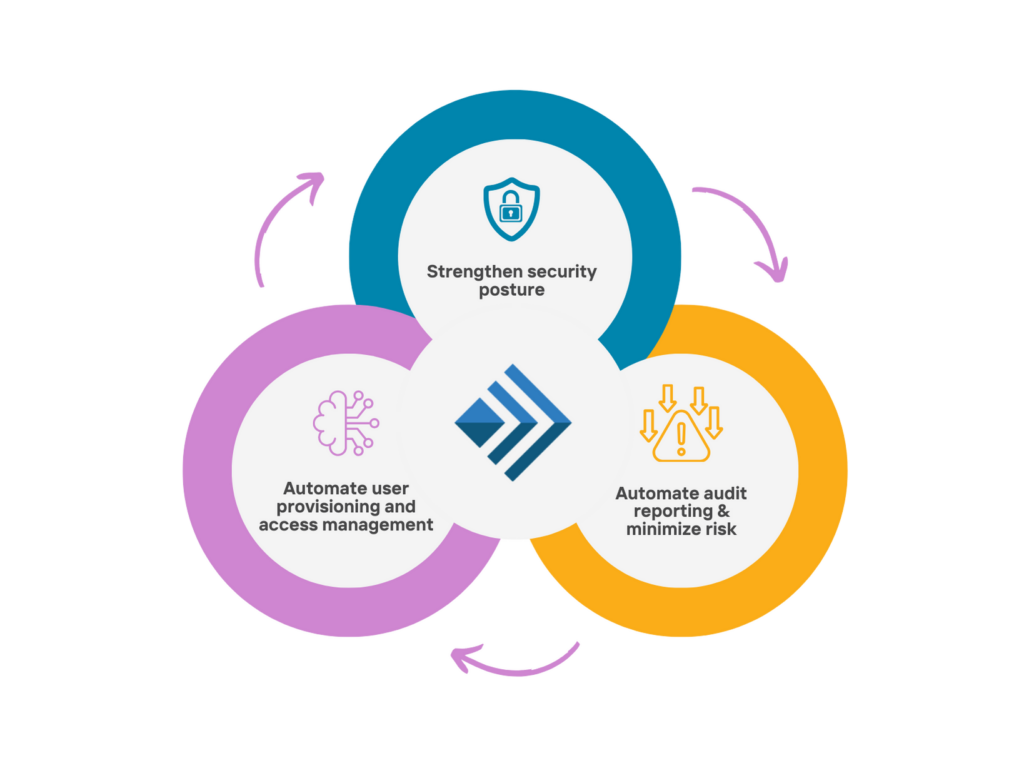
Like the road signs that inform you of upcoming intersections, patches of ice, and penguin crossings, IAM analytics guide you on your journey to identity maturity. An enterprise constantly collecting crucial data is no better off than an ignorant one unless they make gainful use of that information. The importance of IAM analytics to your maturity is two-fold: the very act of maintaining a strong analytics solution boosts maturity and maintains your systems’ performance.
Do you understand what goes into a robust IAM analytics solution and how it weaves into your identity fabric? If you prioritize the improvement of your IAM maturity (as you should) then IAM analytics are the capstone to your efforts. With a strong IAM analysis service backing up your IAM solutions, you’ll be ready to face your challenges no matter how many penguins cross your path.
Understanding IAM Analytics
Analytics as a unified practice is nothing less than the gainful use of metrics to inform your strategy. Analytics cannot use raw and unprocessed data directly. The data must be parsed and organized into an appropriate structure before it can be used in analytics. Expert identity review interprets this information and thus converts it into actionable insights.
When properly instituted, IAM analytics positively impact all areas of an identity fabric. Benefits include mitigating risks & frauds, timely termination of fraudulent accounts, preventing identity sprawl, and keeping compliant to industry standard goals. Analytics bring valuable insights to customers and help them in taking more data driven decisions, thus creating an impact.
Traditionally manual feeds from many distributed systems collect the IAM data. Manual data feed and distributed process with no data authenticity, and the correlation process was time and effort intensive. Additionally, the analysis can be slow or at least not in real-time. By loading the burden of analysis onto an automated analytics platform, those resources can instead be invested into acting upon the analysis recommendations.
Boosting Maturity with IAM Analytics
You must first understand what a suboptimal analysis solution looks like. Divya Turaga, Principal Consultant, Simeio, reports that many companies make the same mistakes regarding analytics. “They show a lack of data cleaning and outliers filtering process,” she says. “Their lack of a data authenticity verification processes and slow manual processes with SQL operations impact performance.” When companies lack expert knowledge of what goes into optimized IAM analytics, they set themselves up for failure. Their choice of analytics tools, tendency to confuse metrics with KPIs, deviated analytics mis-representing the company’s goals, incorrect conclusions drawn from the data – all these stem from inexpert handling.
For IAM analytics to aid maturity instead of bringing it down, users must get away from overloaded dashboards and be able to identify the right metrics to be tracked. Companies must consider various factors before opting for an IAM analytics tool. It must meet the enterprise’s security & compliance goals, provide a 360-degree view of the identity information, and enable real time analysis of critical metrics. Additionally, it must have remediation features within analytics for quick data-driven decision making and user and event-agnostic timeline information. It must possess advanced pattern recognition to predict future trends, events, or any outcomes. All of this must be scalable and flexible for customizations with easy visualization and control.
An IAM analysis tool with these capabilities improves your overall IAM controls posture. While you immediately improve your risk analysis and monitoring, the 7 other domains of IAM maturity also benefit. Access management, identity administration, and identity services all become more easily viewed thanks to the real time monitoring. Access governance, privileged identity management, IAM governance, and entitlement services all become more powerful thanks to being informed by analytics.
Implementing with Identity Orchestration
Identity orchestration helps achieve effective IAM and can provide the analytics capability your enterprise needs. Orchestration is an abstract layer on top of multiple identity systems. Thus it serves as the ideal launching point for your analysis engine. Additionally, because it is plugged in to your complete IAM fabric, it digs out the information most crucial to bolstering your maturity.
Just as identity orchestration helps achieve effective IAM, it also forms the basis of robust IAM analytics. Identity orchestration provides the data source modelling needed to connect to multiple IAM system and pull pertinent data. The platform then coverts the unstructured data using an integrated data processing engine to refine the data in real time. An orchestrator can provide functionality across crucial areas due to its vendor-agnostic nature. These include data injection, Hadoop data storage, and processing.
However, before activating an IAM analytics tool, all aspects of an enterprise must integrate it. You need an automated, scalable, and secure analytics tool. The individual metrics collected must be well defined and relevant to the areas they are examining. Because the tool is collating data and providing an interpretation of hard numbers, a degree of subjectivity comes into play. Therefore, it is crucial that the insights of industry experts model the interpretations the tool.
Ultimately, analytics and identity maturity optimize best through identity orchestration services which are specifically and expertly built up for the unique needs of your enterprise. By moving through a managed identity service with experience enabling analytics via orchestration, your analytics become meaningful and actionable. Furthermore, achieving optimization means pairing that analysis with the best tools for acting upon them to strengthen your IAM posture.
